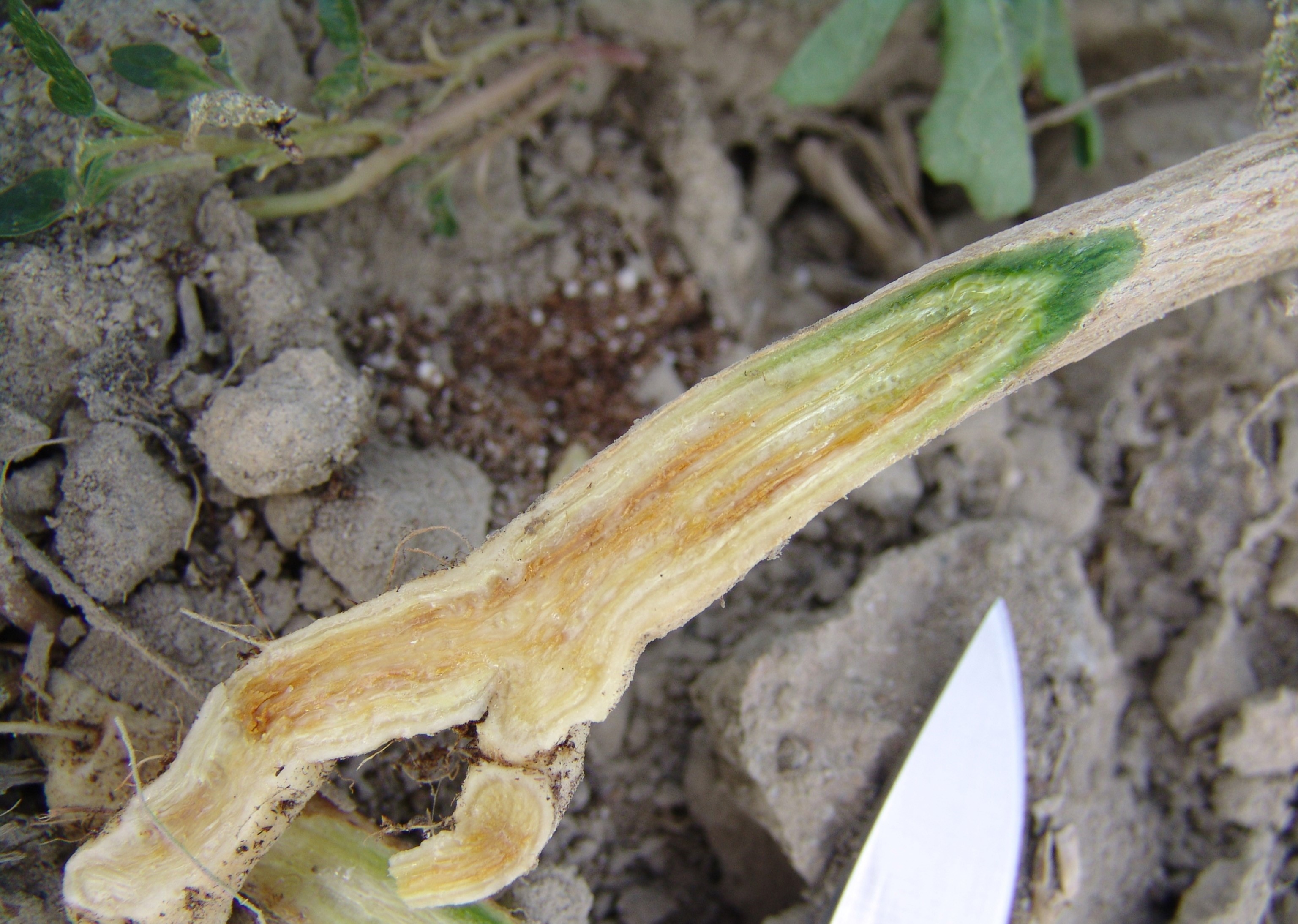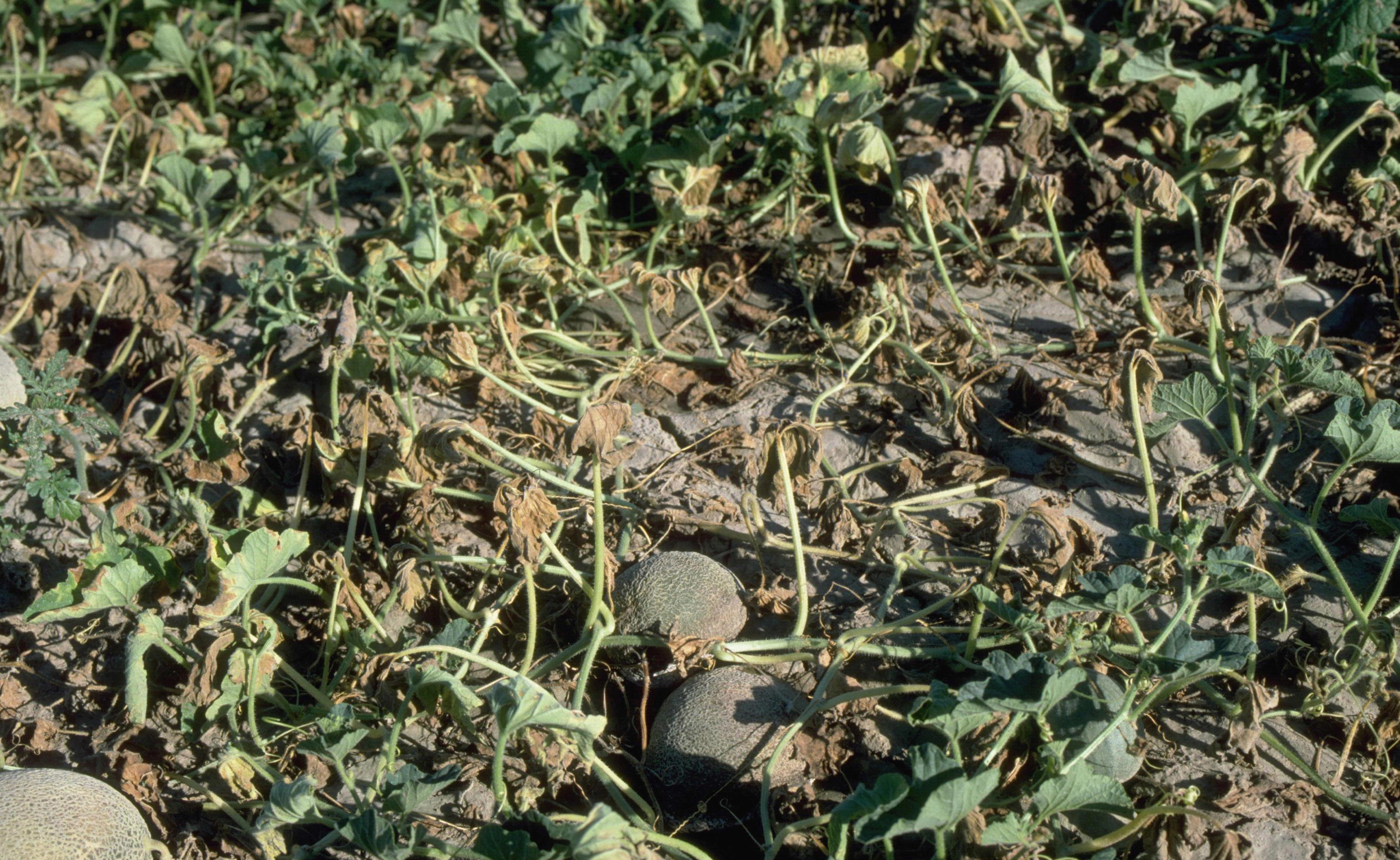Fusarium Wilt of Cucurbit Crops
Return to Diseases
Fusarium wilt (Fusarium oxysporum) primarily affects watermelon but can also occur on melons and cucumber. Symptoms include stunting, yellowing, and wilting of plants. Initially, individual runners wilt, and later the entire plant will collapse. Wilted plants may recover at night but gradually decline and die. Vascular tissue (xylem) from the crown and lower stem will be discolored (brown) when cut and examined. Disease may be more severe if nematodes are present. Note: Watermelon, melon, and cucumber are affected by different formae speciales (groups adapted to a specific host), and each of these groups have different pathogenic races. In the case of watermelon (caused by F. oxysporum f.sp. niveum), there are three races-0, 1, and 2. Resistant cultivars are available to races 0 and 1, but not race 2. As of this printing, race 2 has not been reported in Kentucky. Muskmelons are affected by F. oxysporum f.sp. melonis, which has four known races (0;1;2; and 1,2); race 2 is the most widely distributed in the United States, and resistant cultivars are available to races 0, 1, and 2. Three races of F. oxysporum f.sp. cucumerinum affect cucumbers; race 1 is the most common in the United States

Fusarium wilt vascular discoloration.
(Photo: Gerald Holmes (Strawberry Center), California Polytechnic State University, Bugwood.org)

Fusarium wilt symptoms in melon planting.
(Photo: Howard Schwartz, Colorado State University, Bugwood.org)
Management:
- Select resistant cultivars.
- Space plants for air circulation and rapid drying.
- Use physical barriers (mulches) to prevent fruit from contacting soil.
- Apply protectant fungicides before or at planting.
- Promptly remove and destroy diseased plant material during the growing season.
- Manage weeds and potential alternative hosts.
- Avoid movement of infested soil to clean fields.
- Promptly destroy crop residues after harvest.
- Deep plow to bury residual inoculum.
- Rotate with nonhost crops for at least 3 years.
